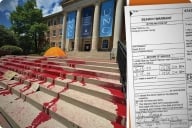You have /5 articles left.
Sign up for a free account or log in.
What kind of “life of the mind” ought higher education strive to develop in today’s students? What relevance does the historic ideal of the “educated person” have for the contemporary academy? What forms of knowledge and teaching give currency to that ideal today? These important questions concern the entire enterprise of higher education. Yet, their answers are not obvious.
How should educators and academic leaders respond? Confronted by conflicting pressures, this is no easy task. Students increasingly seek “meaning” and significance from their college education. They and their parents also insist that college provide entry to good careers. The public supports higher education but rightly worries about its escalating cost. State and federal regulators want more control and greater accountability, though the criteria of assessment are much in dispute.
We believe that any coherent response to these challenges must update the ideal of “a life of the mind.” Students must not only interpret the world, but take up a place within it as citizens, at work, and as whole persons. This requires teaching for practical reasoning, a long tradition that has been overshadowed by the advance of specialized theory and abstract analysis.
Consider an engineer at the beginning of her career. A recent graduate, she is skilled in the analytic techniques she learned in her engineering program. But she finds herself working on an international project for the first time, collaborating with engineers from other nations who define their work differently than she does. How can these engineers work together, in a way that meets the various needs of the client, the employer, and the engineers themselves?
Such practical situations inspire the teaching of one of the faculty members whose instructional practices are featured in A New Agenda for Higher Education: Shaping a Life of the Mind for Practice. The book documents a two-year seminar organized at the Carnegie Foundation for the Advancement of Teaching. The seminar gathered 14 faculty members from professions with a strong humanistic heritage, from the science-using professions, and from traditional liberal arts and science disciplines. Our goal was to inquire into higher education’s ability to prepare students for lives of engagement and responsibility, and how the disciplines and professions contribute to this goal.
The result was a new vision of the value of higher education, developed over three sessions of cross-professional and cross-disciplinary dialogue between the faculty. Based on the seminar experience, we propose that undergraduate education must move beyond “critical thinking” to the idea of “practical reasoning” as the proper end of curriculum and teaching. Critical thinking -- the skill of standing back from the world in order to analyze experience in terms of general concepts -- is a crucial and important goal. But it is not sufficient to guide contemporary living.
Teaching for practical reason means providing students with educational experiences that model what it means to put skill and knowledge to work through judgment and action. In the engineering course mentioned above, for example, engineering students supplement the analytic skills learned in other courses with new knowledge about how the engineering profession and its history differs across nations. Through assignments that require students to imagine the work of other engineers and its ramifications for their own conduct, and vice versa, the course introduces students to important knowledge and skills -- drawn from both the liberal arts and the engineering profession -- for an increasingly global workplace.
Whether in engineering, teacher education, or human biology, the courses documented in the book break down the barriers that separate the disciplines from the professions. As our faculty partners reflected together on their own teaching, they found that they each drew inspiration from the liberal arts and sciences, which teach students how to use broad concepts to inquire into the requirements of particular situations. The faculty also drew inspiration from the professions, which provide students with experience in making judgments on behalf of others within changing and uncertain situations. The faculty also drew inspiration from one another.
Opportunities to engage in such shared inquiry are uncommon. This work is time-intensive. It requires collaboration and administrative encouragement and support. But the Carnegie seminar, which we hope campuses will use as a model for the integration of liberal and professional education, proves that higher education can address the question of what an educated person for our time needs to know and be able to do. This is the “value added” of practical reasoning as the center of undergraduate education, both for the daily experiences of faculty and students and the organization of administrative units. We believe that the seminar offers a powerful example of the kind of faculty development that can enable campuses to introduce their students to “a life of the mind for practice” that prepares them to engage situations, sustain aims amid changing circumstances, and discern purpose and meaning while seeking with others a common good.








